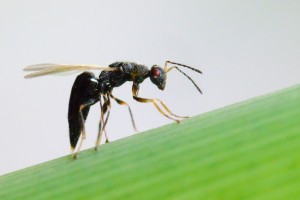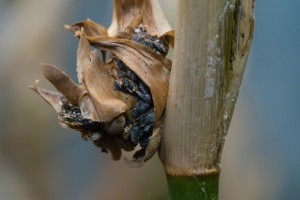Giant reed
Project overview
Although often considered indigenous to the warmer regions of the Old World which includes the Mediterranean region, giant reed may be an ancient introduction to Europe from temperate and tropical Asia, from where it has since been spread globally by early French and Spanish colonists.
Giant reed typically occurs in riparian habitats where it alters hydrological regimes, displaces native plants and wildlife, and exacerbates flooding. Giant reed is highly flammable allowing fire to spread through riparian systems. It can then dominate post-fire due to its ability to rapidly regenerate from underground rhizomes.
A biological control programme targeting invasive populations in the USA and Mexico was initiated in 1999. Two agents, originally from the Mediterranean region, were imported from Texas into containment in New Zealand in 2015, as part of a biocontrol programme targeting invasive weeds in the Pacific.
Giant reed was introduced to New Zealand as an ornamental plant however it has become invasive, especially in the north of the North Island, with isolated infestations found as far south as Queenstown.
Although giant reed is not yet a serious widespread weed in New Zealand, a decision was made to seek permission to release the agents in New Zealand as a ‘pre-emptive’ biocontrol programme.
Two biological control agents were approved for release against giant reed in 2017. These agents are a gall-forming wasp (Tetramesa romana) which damages stems and a scale insect (Rhizaspidiotis donacis).
Key contact




